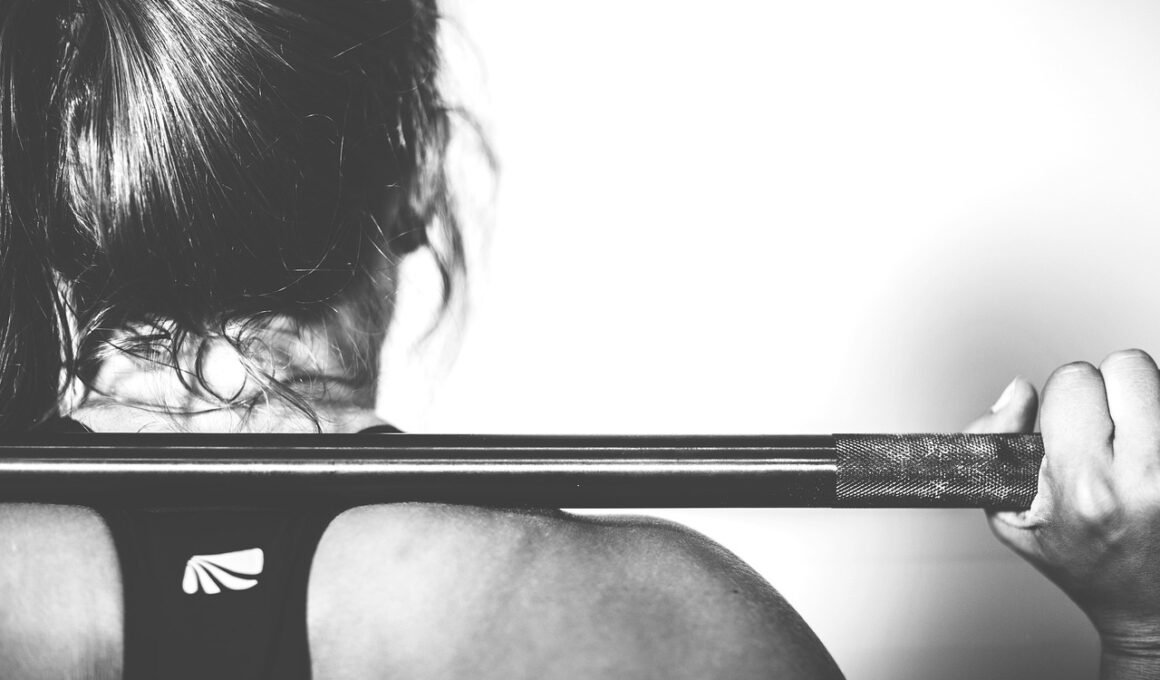How to Put Together Your First HIIT Workout for Lasting Results
High-Intensity Interval Training (HIIT) is an effective way to improve your fitness in a short amount of time. The first step in designing your own HIIT workout is understanding its structure. Typically, HIIT intervals consist of short bursts of intense exercise followed by rest periods to allow recovery. These intervals can be tailored to target multiple muscle groups and improve cardiovascular health. To get started, consider what exercises you enjoy or what equipment you have available. Body-weight exercises, such as burpees and jump squats, are excellent choices and ideal for beginners. You can combine these with weights or resistance bands to maximize results. Keep in mind that the key to HIIT is pushing yourself during the high-intensity intervals while ensuring that your rest times are sufficient to recover. This balance between effort and rest should enable you to complete your workout effectively and safely. Always prioritize form over speed to prevent injuries, especially since you’re just beginning your HIIT journey. Every bit of effort you put forth will lead to supportive results over time, so remain committed to the process of working out strategically.
Next, you need to determine the duration of your HIIT workout. A well-structured session typically lasts around 20 to 30 minutes, making them effective yet manageable. Set a timer to help regulate your intervals. For beginners, aiming for 20 seconds of intense exercise followed by 40 seconds of rest can be a great starting point. As you become more comfortable, you can adjust the intensity or duration of your intervals. It’s essential to start small and gradually scale your efforts. A simple workout might include three exercises performed for four rounds, offering a total of 12 rounds of high-intensity intervals. This format allows you to build up both your strength and stamina. Always include a warm-up before diving into your workout; dynamic stretching is ideal for preparing your muscles. You might consider activities such as arm circles and leg swings to warm up properly. Also, incorporate cooldown stretches after finishing your HIIT session to aid recovery. This practice will help reduce muscle soreness and improve flexibility, making it easier to stick with your fitness regimen long-term and to achieve lasting results efficiently.
Selecting Exercises for Your HIIT Workout
Choosing the right exercises is crucial when designing your first HIIT workout. Focus on a mix of strength and cardio movements for balanced conditioning. Effective exercises include mountain climbers, push-ups, lunges, and jumping jacks. Aim to select about five different exercises to create a comprehensive workout that challenges different muscle groups while maintaining an elevated heart rate. This approach maximizes your calorie burn and enhances your overall fitness. Feel free to modify the repetitions and timing of each exercise to tailor the workout to your current fitness level. For example, beginners can reduce the number of repetitions, while more advanced individuals can increase the intensity. Supplement these exercises with core workouts like planks to build stability. Additionally, consider alternating between upper body, lower body, and core exercises throughout your session to keep things interesting and stimulating. Mixing your workout will also prevent fatigue and create a more dynamic training experience. Remember that enjoying your workout will enhance your motivation and commitment to your fitness journey.
As you continue to design your HIIT sessions, remember to listen to your body. Allow for adequate recovery between workouts by giving your muscles time to heal. Typically, aiming for at least 48 hours of rest between HIIT workouts is advisable. Incorporating lower-intensity workouts such as yoga or brisk walking can help maintain your fitness level during these recovery days. Your body needs time to adapt and strengthen itself after hard work. Adequate rest not only helps in avoiding injuries but also improves performance in subsequent workouts. Overworking may lead to burnout, and that can negatively impact your motivation and long-term results. It’s important to maintain an equilibrium by adjusting workout intensity based on how you’re feeling. Tracking your progress and recovery will also help you make informed decisions about your training schedule. Consider keeping a fitness journal where you log your workouts, rest periods, and how you felt afterward. This way, you’ll continuously learn what works best for your body, ultimately leading to lasting fitness improvements.
Nutrition Considerations for HIIT
Balancing your HIIT training with proper nutrition can significantly enhance your results. Consider incorporating a mix of macronutrients in your diet, focusing on protein and healthy carbohydrates. Fueling your body with the right nutrients before and after workouts is crucial for maximizing your performance and recovery. For example, eating a small snack that contains protein and carbs about 30 minutes before your HIIT session can provide the energy needed for intense efforts. Post-workout recovery snacks, like a protein shake or Greek yogurt with fruit, can replenish your muscles and help with repairing tissue. Hydration is equally important, so remember to drink plenty of water leading up to, during, and after your workouts. Dehydration can hinder performance and prolong recovery times. Aim to drink water regularly throughout the day, and consider hydration during your workout as well. Furthermore, a balanced diet rich in fruits and vegetables will provide essential vitamins and minerals, helping your body recover and perform at its best. Researching nutritional guidelines can also give insights into meal prepping to support your fitness routine superbly.
To ensure you remain engaged with your HIIT workouts, consider setting goals that motivate you. Establishing both short-term and long-term goals will provide direction and keep track of your progress. Whether your objective is to lose weight, build muscle, or improve general fitness, having measurable targets can foster a sense of accomplishment. Set realistic benchmarks that challenge but do not overwhelm you to maintain enthusiasm and dedication. As you achieve your goals, celebrate your progress and reward yourself without reverting to unhealthy habits. For example, treat yourself with new workout attire or enjoy a day out hiking. Using a workout buddy can also increase motivation and accountability. The social aspect can make exercising more enjoyable and less isolating, fostering a sense of community. You might also consider joining a local fitness class, which can add variety to your routine. Shifting your environment and incorporating new challenges helps avoid plateauing. Embrace this journey as a chance to discover what you love about fitness while working towards lasting results effectively.
Continuously Evolving Your HIIT Routine
As you become more accustomed to your HIIT workouts, aim to keep challenging yourself by consistently evolving your routine. Gradually increasing the intensity, duration, or complexity of exercises can lead to continuous improvement. This approach to training allows for ongoing adaptation as your fitness levels rise. You might incorporate different workout styles such as Tabata or circuit training to maintain interest and change your body’s response to exercise. Additionally, consider integrating new equipment, like kettlebells or resistance bands, to diversify movements. Continuing your fitness journey is not only about physical evolution but also about mental resilience. Encourage yourself to step outside of your comfort zone by trying new exercises or variations, which promotes growth. Moreover, keep learning about new HIIT trends and instructional techniques that can enhance your understanding. This information can help refine your approach, making your workouts more effective. Lastly, remember that fitness is a lifelong journey; establishing a strong foundation with HIIT can lead to additional avenues like advanced training, competing, or simply enjoying an active lifestyle.
In conclusion, designing your first HIIT workout can be a fulfilling venture that empowers you to take charge of your health and fitness. Flexibility in your training, coupled with a strong commitment to following your regimen, will lead to lasting results over time. Balancing high-intensity sessions with thorough recovery protocols and nutritional awareness is essential for sustaining progress. Acknowledge that everyone’s fitness journey is unique, and embracing personal preferences will generate positive experiences. Reflect on your accomplishments, no matter how small, to motivate you toward achieving larger goals. With an open mind, you can explore various exercises and methodologies, ensuring your workouts remain fresh and enjoyable. Cultivating a supportive environment, whether through workout partners or community classes, boosts not just your motivation but also your overall commitment. The journey does not end with just one workout—it’s an ongoing pursuit of wellness and self-improvement that extends beyond fitness. By embracing the challenge of HIIT training, you empower yourself toward achieving a healthier lifestyle sustainably. Keep challenging yourself, stay determined, and always prioritize your well-being as you navigate through this exhilarating journey.


